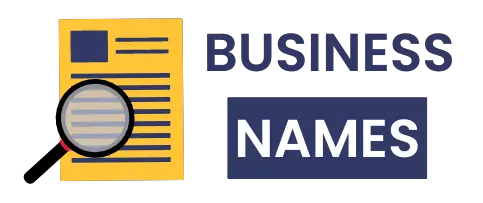At 55, Sarah thought her financial life was over after her divorce wiped out her savings and retirement accounts. Like millions of Americans starting over financially at 55, she faced the daunting reality of rebuilding wealth when conventional wisdom says it’s “too late.”
Whether you’re dealing with divorce, job loss, medical expenses, or years of poor planning, financial recovery strategies exist specifically for your situation.
This comprehensive guide reveals proven methods to rebuild substantial wealth in just 10-15 years using catch-up contributions, aggressive saving techniques, and cutting-edge financial tools designed for late starters. Your comeback story starts today.
Starting Over at 55: How to Fix Your Retirement When You’re Behind
You’re 55. You look at your bank account and feel sick.
🚀 Financial Recovery Arsenal 2025
Your Complete Toolkit for Starting Over at 55+
Breakdown:
• Standard limit: $23,500
• Catch-up bonus: $7,500
• Ages 60-63 get extra: $11,250 catch-up
Triple Tax Advantage:
• Deductible contributions
• Tax-free growth
• Tax-free medical withdrawals
Every dollar has a job:
• Needs: 50% of income
• Savings: 20-25% (aggressive)
• Wants: 25-30%
Traditional vs. Catch-up:
• Normal advice: 10-15%
• Your situation: 20-25%
• Emergency fund: 3-6 months expenses
- Calculate your maximum 2025 catch-up contributions
- Set up automatic transfers to maximize tax-advantaged accounts
- Download and configure a zero-based budgeting app
- Audit and cancel unnecessary subscriptions
- Create debt elimination plan using avalanche method
- Open or maximize HSA contributions if eligible
- Schedule monthly financial review meetings with yourself
Your friends talk about their retirement plans while you wonder if you’ll ever stop working. The panic sets in when you realize you have maybe 10 years to figure this out.
Here’s the truth: You’re not alone. And you can fix this.
The Reality Check: Where You Actually Stand
Let’s start with the numbers that matter.
The average American in their 50s has saved $970,570 for retirement. But here’s what that number doesn’t tell you – half of people have saved way less than that. The median amount? Just $441,611.

That means millions of people your age are in the same boat.
More reality: 59% of workers plan to keep working during retirement. Not because they love their jobs. Because they have to.
Only 35% of people feel confident about their retirement savings. If you’re reading this, you’re probably not one of them.
But here’s what gives you hope: You still have 10-12 working years left. That’s enough time to make a real difference.
Your Financial Recovery Arsenal: 2025 Tools and Strategies
Starting at 55 gives you superpowers that younger people don’t have. The government actually helps you catch up.

Catch-Up Contributions Are Your Secret Weapon
In 2025, you can put $31,000 into your 401(k). That’s $7,500 more than younger people can save.
For IRAs, you get an extra $1,000 on top of the $7,000 limit. Total: $8,000 per year.
If you’re 55 or older, you can also put an extra $1,000 into your Health Savings Account (HSA).
Modern Tools That Actually Work
Apps like YNAB and PocketGuard can find money you didn’t know you had. PocketGuard finds subscriptions you forgot about and cancels them for you.
These aren’t just fancy calculators. They’re money-finding machines.
Zero-Based Budgeting
This means every dollar gets a job before you spend it. No money sits around doing nothing.
The Aggressive Savings Blueprint
Forget the old advice about saving 10-15% of your income. You need to save 20-25% now.
I know that sounds impossible. But here’s how you make it work.

The Math That Matters
Financial experts say you should have 7 times your current salary saved by age 55. If you make $60,000, that’s $420,000.
Don’t have that much? You’re not broken. You just need a different plan.
Automate Everything
Set up automatic transfers the day you get paid. Move money to savings before you can spend it.
Start with 1% of your paycheck. Next month, make it 2%. Keep going until you hit 20-25%.
Use Every Tax Break You Can Get
Max out your 401(k) first. Then your IRA. Then your HSA if you have one.
Each dollar you put in these accounts saves you money on taxes right now.
Slash Your Expenses Like Your Future Depends on It
Your expenses are killing your retirement dreams. Time to fight back.

Housing: Your Biggest Opportunity
Housing probably eats 25-30% of your income. Cut that by just 5%, and you free up thousands per year.
Options:
- Refinance your mortgage if rates dropped
- Rent out a room
- Downsize to a smaller place
- Move somewhere cheaper
Transportation: Stop Bleeding Money
Cars are money pits. If you have a car payment, you’re paying for someone else’s retirement instead of your own.
Buy used cars with cash. Drive them until they die. Your bank account will thank you.
The Subscription Audit
Use PocketGuard or similar apps to find every recurring charge. Cancel anything you don’t use weekly.
That $12.99 streaming service you forgot about? That’s $156 per year. Invested properly, that becomes $500 by retirement.
Healthcare Costs
If you have an HSA, max it out. HSAs are the best retirement accounts that exist.
You get a tax deduction now. The money grows tax-free. And you pay no taxes when you use it for medical expenses.
Debt Elimination: Your Path to Freedom
Debt is retirement poison. Every dollar you pay in interest is a dollar that can’t grow for your future.

Pick Your Strategy
Debt avalanche: Pay minimums on everything, then attack the highest interest rate debt first.
Debt snowball: Pay minimums on everything, then attack the smallest balance first.
Avalanche saves more money. Snowball feels better psychologically. Pick the one you’ll stick with.
2025 Opportunities
Balance transfer cards still offer 0% interest for 12-21 months. If you have good credit, use these to stop paying interest while you pay down balances.
Look into refinancing high-rate debt at current lower rates.
The Golden Rule
Don’t take on new debt while you’re paying off old debt. This seems obvious, but it’s where most people fail.
Income Optimization and Side Hustles
You need more money coming in. Here’s how to make that happen.

Don’t Let Age Scare You
Yes, some employers discriminate against older workers. But you have advantages too:
- Experience that can’t be taught
- Network built over decades
- Skills that young people don’t have
Skill Up Fast
Take online courses in high-demand skills. Google certificates, AWS training, and project management courses can boost your income quickly.
Many are free or cheap. The return on investment is huge.
Side Income Ideas That Work
Consulting in your field pays well and uses skills you already have.
Freelance work on platforms like Upwork can bring in $500-2000 extra per month.
Teaching what you know through tutoring or online courses.
The Magic of Delayed Retirement
Every year you delay Social Security past full retirement age, your benefits increase by 8%. That’s guaranteed return on investment.
Working until 67 instead of 65 could mean $300-500 more per month for life.
Investment Strategy for Late Starters
You don’t have 30 years for your money to grow. But you still need growth.

The 110 Rule
Subtract your age from 110. That’s the percentage you should have in stocks.
At 55: 110 – 55 = 55% stocks, 45% bonds.
This balances growth with safety.
Dollar-Cost Averaging Is Your Friend
Invest the same amount every month, no matter what the market does. This smooths out the ups and downs.
Target-Date Funds Make It Easy
Pick a fund with a date close to when you’ll retire. The fund automatically adjusts as you get older.
It’s not perfect, but it’s way better than doing nothing.
Use Free Tools
Empower (formerly Personal Capital) gives you free investment analysis. It shows if you’re taking too much or too little risk.
Healthcare and Insurance Planning
Healthcare costs will destroy your retirement if you don’t plan for them.

The Bridge Strategy
If you retire before 65, you need health insurance until Medicare kicks in. COBRA is expensive but might be your best option.
Long-Term Care Insurance
If you’re married, look into this now. If you’re single, you can wait until 60.
Long-term care costs $50,000-100,000 per year. Insurance protects your retirement savings.
HSA Maximization
After age 65, you can use HSA money for anything without penalty. It becomes like a traditional IRA.
This makes HSAs the best retirement account for people who have them.
Estate Planning and Legacy Building
You need basic legal documents, even if you don’t think you have much money.

The Essentials
- Will
- Power of attorney for finances
- Healthcare directive
- Beneficiary forms on all accounts
Review Everything
Make sure beneficiary forms match your current wishes. These override your will, so they need to be right.
Update these whenever life changes: marriage, divorce, births, deaths.
Mental Health and Motivation Strategies
Starting late is emotionally hard. Your brain will try to sabotage you.

Stop the Shame Spiral
Comparing yourself to others is useless. You can’t change the past. You can only control what happens next.
Build Habits, Not Goals
Don’t focus on saving $500,000. Focus on saving $500 this month.
Small wins build momentum.
Get Accountability
Tell someone about your plan. Check in with them monthly.
Join online communities of people doing the same thing.
Celebrate Progress
When you pay off a credit card, celebrate. When you hit a savings milestone, do something fun (that doesn’t cost much).
Progress deserves recognition.
Your 90-Day Action Plan
Here’s exactly what to do in the next three months.
Days 1-14: Assessment
- List all debts and interest rates
- Calculate your net worth
- Figure out your monthly expenses
- Set up accounts if you don’t have them
Days 15-45: Setup
- Start maximum 401(k) contributions
- Open IRA if you need one
- Set up automatic transfers to savings
- Apply for balance transfer cards if needed
Days 46-90: Optimization
- Cancel unnecessary subscriptions
- Refinance debt if possible
- Start side income research
- Create your investment plan
Every Month After
- Review progress
- Adjust contributions up if possible
- Look for new ways to cut expenses
- Track your net worth growth
You Can Still Win This Game
Starting at 55 isn’t ideal. But it’s not hopeless.
You have catch-up contributions. You have experience. You have tools that didn’t exist 20 years ago.
Most importantly, you have time. Not as much as you’d like, but enough to make a real difference.
The people who succeed are the ones who start today, not tomorrow.
Your Next Step
Right now, calculate how much you can contribute to your 401(k) with catch-up contributions. Set up the automatic transfer today.
That one action puts you ahead of everyone still thinking about it.
Financial recovery at 55 starts with the first dollar you save, not the last one.

